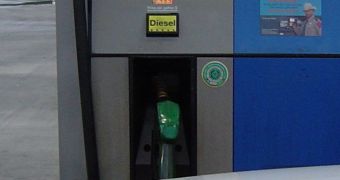Scientists are currently working on a new method of producing new fuel out of energy that would otherwise be wasted. This time, they are going after the energy generated when cars break, which goes unused today. Experts believe they can convert it to compressed air, for later use.
The compressed air could then be used to assist the engine by providing more power during start-up, or by helping to save fuel as the car is idling with the engine one. Other uses are possible as well.
Vehicles such as this, known as pneumatic (air) hybrids, are not yet in production. However, the same technology used in this theoretical concept is already used in electric and hybrid electric vehicles.
As these cars break, the energy generated during the process goes into a generator that then powers up the batteries, to extend range. Doing the same thing, but with pneumatic hybrids, would be cheaper.
According to Lund University combustion engines researcher Per Tunestål, it would be a lot easier and cost-effective for car manufacturers to produce air hybrids rather than their electric counterparts.
“The technology is fully realistic. I was recently contacted by a vehicle manufacturer in India which wanted to start making air hybrids,” the expert says, quoted by AlphaGalileo.
Moving past personal vehicle applications, the technology will benefit certain vehicle categories most. For example, heavy buses and delivery trucks working in an urban environment could really make the most of such a system.
These machines have to break constantly, avoid pedestrian, stopping at traffic lights and so on. Their auxiliary power generators would produce very large amounts of compressed air.
“My simulations show that buses in cities could reduce their fuel consumption by 60 per cent,” explains PhD student Sasa Trajkovic, who is also based at the university. The expert adds that about 48 percent of the energy used to break the vehicle could be stored for later use.
The new mechanism, which works equally as well with petrol, natural gas and diesel, takes up a lot less space in a vehicle, is lighter, and also significantly cheaper. The efficiency level is comparable to today's electric hybrid vehicles.
“This is the first time anyone has done experiments in an actual engine. The research so far has only been theoretical. In addition, we have used data that means we get credible driving cycle results, for example data from the driving patterns of buses in New York,” Sasa Trajkovic explains.

 14 DAY TRIAL //
14 DAY TRIAL //